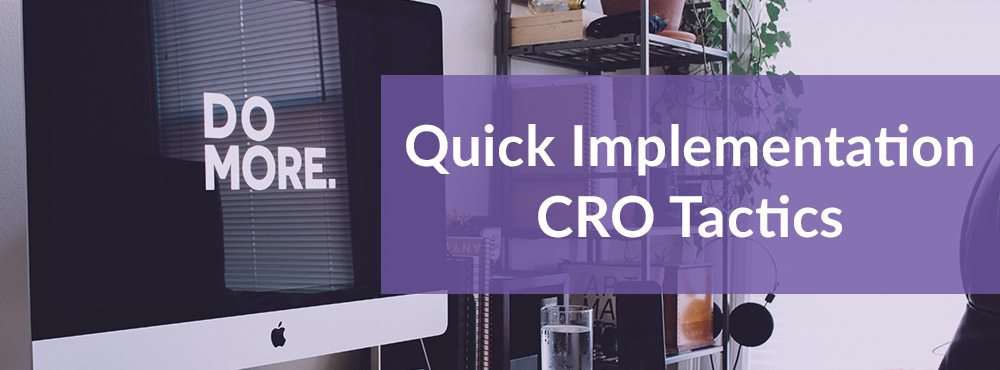The COVID19 lock down is upon on us, and the initial shock has (hopefully) begun to wear off. Many of us have entered ‘take action’ mode, taking what we can into our own hands to maximise profits where possible.
According to Virgin Media, internet usage has increased by up to 90% since we began this period of isolation; therefore, an increased volume of your audience is likely to be online. If you are actively continuing with marketing to drive traffic to your website, there are tactics you can implement to increase the number of conversions from SERPs to your site. this is also referred to as CRO – conversion rate optimisation.
After making changes to your website you can maintain the same:
- Marketing spend
- Average cost per click (on paid ads)
- Volume of website traffic*
- Average order value*
*(based on no increase in spend or activity)
But increase:
- Conversion rate
- Volume of conversions
- Revenue
- Return on investment
1. Check page load speeds
You know as well as we do, slow-to-load sites will see traffic exiting the site in seconds. We’re an impatient society with high expectations and we will head straight to the next site in the SERPs if pages are slow to load.
In fact, research from Smart Insights found that 57% of visitors will abandon a site if the page load time is longer than three seconds, and 80% will never return.
A few easy-to-implement strategies to improve the load time of your site include: choosing a dedicated hosting plan, avoiding re-directs, and compressing the images and media you use on your website.
2. Understand how visitors are using your site
There are several ways that you can do this. You can use your website’s analytical platform – such as Google analytics – to determine your most popular pages, and which ones have a particularly high bounce or exit rate. This will guide you to the pages you may need to make changes to first.
By taking this data and coupling it with a tool such as HotJar, you will gain a deeper insight into the buttons that users are clicking, and the content they’re engaging with, and how far they’re scrolling (their ‘scroll depth’).
Why is this important? If you have really important information at the bottom of a page…but your audience only ever scrolls halfway down the page, they’re not going to see it.
With this in mind…
3. Get the really important information above the fold
Contact information, contact forms, strong calls to action, key selling points, what you offer, even a customer testimonial – get it all in the top half of the page that people see without scrolling.
Make it easy for users to understand who you are, what you do and how to get in touch with you.
Give users what they want!
4. Use Apple Pay or Google Pay
As someone who internet shops, A LOT, I cannot stress how important this is.
I’ve found the items I want to purchase; I’ve added them to the basket – I just want you to take my money. I don’t want to have to find my purse, find my card and spend more time entering my card details.
It’s 2020 – if you don’t use Apple Pay then I am going to leave the site and find someone that does. It’s as simple as that my friends – make it easy for people to hand over their money, because they (I!) want to.
5. Use reviews
As well as being impatient, people can be a pretty cynical bunch, too. What YOU say about your business and service offering only holds so much weight; what truly carries authenticity is what your customers say about you.
Regularly ask for reviews from your customers, use them on your website (above the fold, naturally!) and put them into action on your social media platforms and email nurture sequences too.
6. Add imagery
Our brains process images 60,000 times faster than written word and can help you improve your conversion rate. Images put your product or service into context and enables users to forge positive associations with your brand.
Use high-quality images – ALWAYS. If you sell items, show them being used, worn and enjoyed. If you are selling a service, showcase your (happy, smiling) team – people want to see the faces behind a brand as it helps humanise you to build trust.
7. Don’t make contact forms longer than they need to be
Before we start – put the form ABOVE THE FOLD.
There is nothing more infuriating than having to part with your name, telephone number, email address, job title, size of business you work for, shoe size, NHS number, place of birth, social media handles just to get in contact with a business online.
What is the absolute core information you need from your prospects when they get in touch? Establish this as mandatory and the other fields optional and include a message box to open lines of communication too.
8. Use dedicated landing pages
Running a targeted campaign? Great. So why send traffic to a generic page on your website?
Use dedicated pages that reflect the tone, message and calls to action in your ads and use an optimised contact form to drive conversions. This might require a little more investment timewise, but it will provide a return.
Improving your rate (and volume) of conversion doesn’t need always require heavy financial investment. It requires you to make yourself accessible, with an easy-to-use website and implementation of strategies that make you an authentic, trustworthy and consistent business.
For more information on improving your lead generation with Media Matters, contact a member of the team today.





